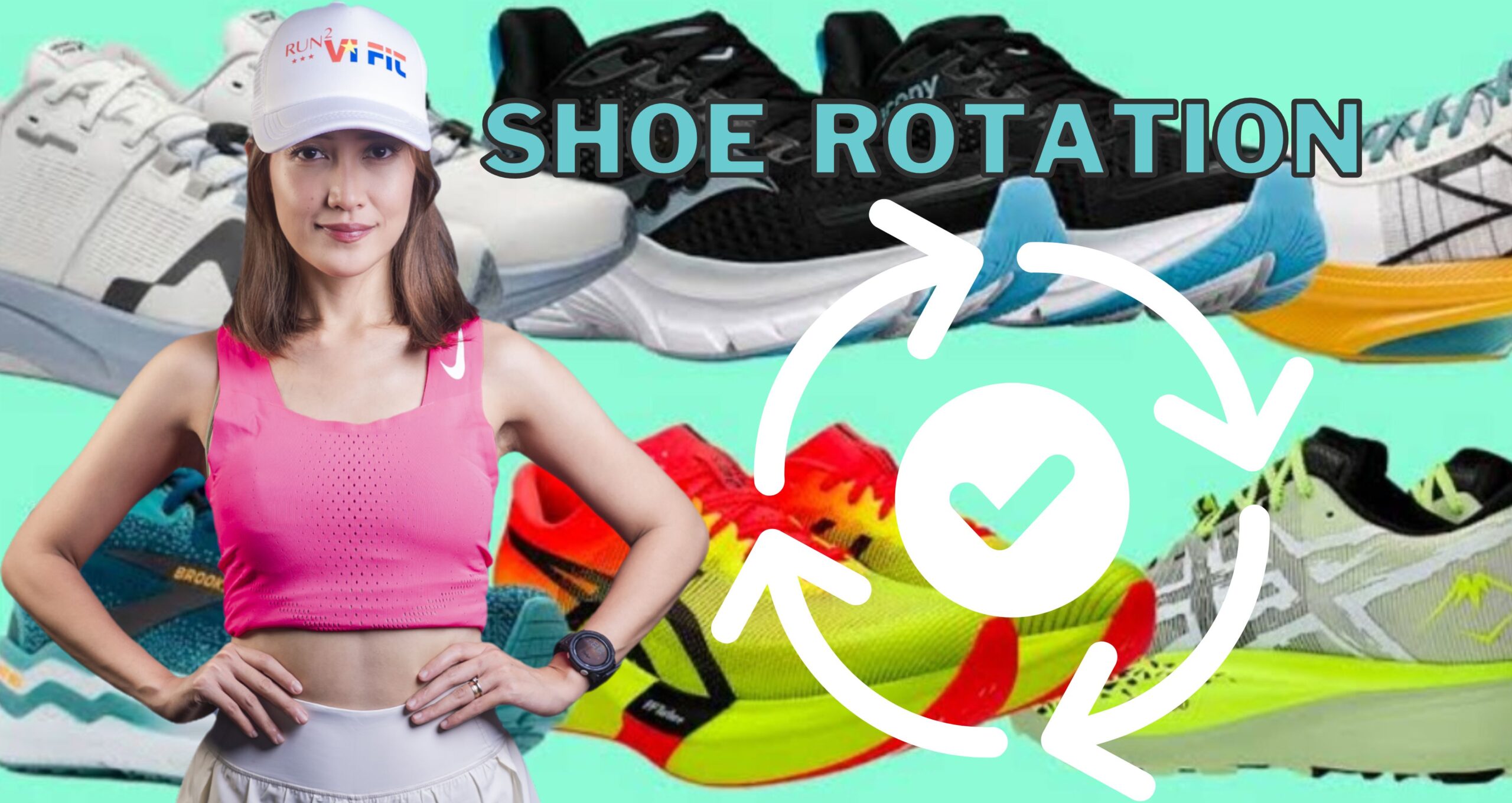Your cart is currently empty!

“Maximize Your Runs: The 3 Essential Shoes Every Runner Should Rotate”
/
The Three Types of Running Shoes You Should Rotate for Optimal Performance
One of the best-kept secrets of successful runners is having a rotation of running shoes tailored to different training purposes and intensities. Not only does this approach help you optimize your performance, but it also reduces the risk of injury and extends the lifespan of your footwear. Below are three essential types of running shoes to include in your rotation, along with an optional fourth category for race day.

- Easy/Recovery Day Shoes
Purpose: Easy or recovery day shoes are designed for slow, relaxed runs that help your body recover after intense workouts or races. Their primary goal is to provide maximum comfort while reducing the strain on your muscles and joints.
Features: These shoes are known for their high cushioning and softer midsoles. The plush feel absorbs impact effectively, allowing your legs to feel less fatigued as you recover. They typically offer a more forgiving ride, prioritizing comfort over speed.
Example Use: Imagine you’ve just completed a grueling speedwork session or a long-distance run. Your legs are sore, and your energy is depleted. Recovery day shoes are perfect for easing back into running with gentle, slow-paced miles that promote healing and reduce soreness.
Why They’re Essential: Incorporating easy day shoes in your rotation ensures that your body gets the care it needs between demanding runs. These shoes prevent overtraining by encouraging a relaxed pace, making them a staple for long-term running success.
- Daily Training Shoes
Purpose: Daily training shoes are the workhorses of your running rotation. They’re built to handle the bulk of your mileage and are versatile enough to accommodate various types of runs.
Features: These shoes strike a balance between cushioning, durability, and support. While they’re not as plush as recovery shoes or as lightweight as speed shoes, they offer reliable performance for general training needs. The materials used are designed to withstand repeated use, making them highly durable.
Example Use: Whether you’re going for a medium-long run, an easy jog, or just getting in some steady miles, daily training shoes are your go-to. They’re the perfect blend of comfort and functionality for consistent training.
Why They’re Essential: Since most of your running will fall into this category, having a dependable pair of daily trainers ensures you stay comfortable and injury-free as you build your mileage.

- Speed/Tempo Shoes
Purpose: Speed or tempo shoes are built for fast-paced runs, such as intervals, tempo workouts, and progression runs. These shoes are all about performance and responsiveness, helping you improve your speed and efficiency.
Features: Lightweight materials and a responsive midsole characterize these shoes. They’re often designed with a firmer ride and excellent energy return to encourage quick turnover. Some models may even include advanced technologies like carbon plates for added propulsion.
Example Use: Think of those sessions where you’re pushing your limits—whether it’s a series of intervals on the track or a tempo run at a challenging pace. Speed shoes help you stay light and agile while maintaining momentum.
Why They’re Essential: Incorporating speed-focused shoes in your rotation allows you to train at higher intensities without overburdening your legs. Their lightweight build and responsive nature make a noticeable difference during faster workouts.
Optional: Race Day Shoes
For runners who want to maximize their performance during competitions, race day shoes are worth considering. These highly specialized shoes are designed for efficiency and speed, often featuring advanced technology like carbon fiber plates and ultra-lightweight materials. They complement the other categories by providing an edge on the days that matter most.
When to Use: Reserve race day shoes for special events or personal best attempts. Their construction prioritizes performance over durability, making them less suitable for regular training.

Final Thoughts
Rotating your running shoes based on purpose and intensity is a game-changer for both casual and competitive runners. Easy/recovery day shoes ensure your body recovers effectively, daily training shoes keep you consistent, and speed/tempo shoes unlock your potential for faster paces. Adding race day shoes to your collection can further enhance your performance during key events.
By investing in the right footwear and using them strategically, you’ll not only improve your running experience but also reduce the risk of overuse injuries. So, take stock of your running goals, evaluate your needs, and start building a versatile shoe rotation today.
